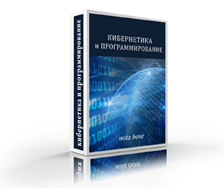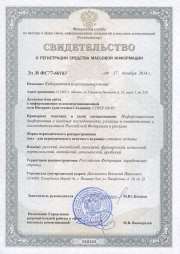MAIN PAGE
> Journal "Cybernetics and programming"
> Rubric "Educational software systems"
|
Educational software systems |
|
Sulina O.V., Slominskaya E.N. - Organization and performance concept for the final project in engineering and graphic disciplines in technical higher education schools.
|
|
pp. 1-9
|
DOI: 10.25136/2644-5522.2017.3.23326
Abstract: The article is devoted to the topical issues regarding scientific and methodological elements in the education process organization in the sphere of engineering and graphic disciplines in the technical higher education schools. The article uses an example of a final project for the product design in the Creo Parametric MCAD-system. This program is a part of the multifunctional product construction system CAD/CAM/CAE within the PTC Creo system. It has direct access into the vital cycle support system Windchill PDMLink. Within the framework of their final project the student study the purpose, construction, working principles, key parameters and elements of a product, based upon the original detail layout the students study 3D models of original details, form the assembling model, spaced view, animated process of assembly or dismantling of the product. They provide presentation view for the model using the option of photo-realistic rendering, provide associative assembly drawing and product specification, then they present their projects in the final practical class. The authors have formed an electronic bank of individual assignments based upon the analysis of the general and specific cross-disciplines, which are differentiated for various specializations. The authors have developed and tested the method for active and task-oriented studies in order to hold classes in project construction and technological activities involving multifunctional MCAD-systems in the early years of their education, as well as to from professional thinking models among the students. The article illustrates the possibilities for more active and intensive education process taking into account the development tendencies, as well as involvement of information technologies and automatic design systems in the industry and education alike. It also allows to improve the quality of homework and lab assignments within the context of interdisciplinary studies competence guarantees in accordance with the Federal State Education Standards for Higher Education for the students.

|
Nekhaev I.N., Zhuykov I.V. - Decision Making Modelos in Intelligence Systems of Testing Competency Levels
|
|
pp. 18-34
|
DOI: 10.7256/2306-4196.2016.4.19863
Abstract: The article is devoted to the question whether it is possible to execute modeling and computer-aided evaluation of students' competency levels based on the analysis of their decisions. The emphasis is made on the method of constructing the structure of complicating of routine tasks and operational space of potential solutions. Based on the preset operational space, the authors of the article suggest to create expert agents which solutions will serve as the basis for further analysis of rationality and completeness of students' decisions. As a result of the students' decision anaylsis, the authors develop their competency map. The level of competency is defined by the difficulty of routine tasks soloved by students as part of the given knowledge module. The research involves modeling particular components of the decision making process and interaction methods when making a decision about the level of students' competency. The main conclusions of the research are the following. Firstly, the aforesaid model of the decision operational space, on the one hand, limits a possible set of applicable basic operations and enables formulation and logging of users' decisions by the testing system and, on the other hand, gives freedom to students in the process of constructing potential decisions. Secondly, the array of routine task complication constitutes a good basis for constructing the competency map of a student in a form of an overlay model, allows to model and evaluate the level of competency in accorance with the level of difficulty of tasks being solved, and enables to arrange for adaptive testing that takes into account individual features of students. Thirdly, the data structures introduced in the operational space of decision making can be adjusted in accordance with the incoming information in order to be adequate. The models reviewed create a good basis for implementing multiagent and neural network paradigms for programming intelligence systems of testing.

|
Sokol'nikov A.M. - Mobile Learning: problems and perspectives
|
|
pp. 28-34
|
DOI: 10.7256/2306-4196.2013.6.9668
Abstract: The article gives the definition of mobile learning and presents the results of the research on statistics of the mobile learning market carried out by Ambient Insight 2010 Marketing Agency among the students of the Volga State University of Technology showing the most popular ways of mobile phone usage in the learning process. The author makes the assumption of the reasons for the popularity of this type of education. The article reviews problems impeding the development of mobile learning, disadvantages of existing courses and presentations in Microsoft Power Point format. The author lists the leading companies in the world market of e-learning courses software development. As a result the author proposes a way to simplify the process of building a m-learning course and gives detailed step-by-step instruction for building a simple e-learning course available at the most popular mobile devises using the software for creating a Microsoft Power Point presentations and iSping presentation convertor.

|
Nekhaev I.N., Zhuykov I.V., Bastrakov R.V. - Architecture of the intelligent testing system for the levels of formed subject competencies.
|
|
pp. 41-65
|
DOI: 10.25136/2644-5522.2017.4.23840
Abstract: The article concerns the computer testing system architecture, possessing the elements of intelligence. The intelligence of the testing system involves adaptability of the testing process, as well as the ability to diagnose and identify errors in the decision process, and it is provided for by the use of the knowledge base of the subject area, the structure of the complexity of case tasks, as well as the expert subsystem and the competency model of students. The subject of the study concerns method and results of implementing an automated assessment of the level of formed subject competencies among the students based upon an analysis of their task decisions generated in accordance with the structure of the level of complication of typical tasks. The options for the use of the intellectual testing system in the context of online learning involve the options of the component architecture of the implemented system as learning subsystems embedded in LMS Moodle, diagrams of the system functioning and usage. The research involves the analysis of the implemented environment architecture for solving learning tasks, as well as and the structure of decision-making concerning the level of the formed subject competencies of the students. The results of introducing a subsystem into a real online course are analyzed. The main results of the study are as follows: the architecture of the subsystem used is sufficiently flexible and makes it possible to provide the registration and logging of decisions for users of the testing system, provides the freedom of the student in the construction of possible solutions; comparative analysis of the solution with the decisions of the agent-experts makes it possible to evaluate the rationality of the solutions; construction of student competency map as overlay model makes it possible to assess the level of the formed subject competencies in accordance with the level of complexity of tasks; it allows organizing adaptive testing that takes into account the individual characteristics of students; the system is open for further development through the introduction of multi-agent and neural network solutions.

|
Raeckiy A., Shlyanin S., Ermakova L. - The implementation of the differentiation of access rights in the "Portfolio SibGIU" information system
|
|
pp. 44-54
|
DOI: 10.25136/2644-5522.2019.2.18530
Abstract: The object of the study is the information system for the formation of the student's electronic portfolio. The subject of the research is the organization of the differentiation of access rights for different groups of users: students, portfolio moderators and administrators. The rights, functions and interface of each user group of the information system are considered in detail. A mechanism is described that allows the Siberian State Industrial University Portfolio information system to define a new right for LMS Moodle, which gives the Moodle user the ability to view all categories of files in the portfolio, as well as a report on the group's activities. When creating an information system, the deduction method was used, in which, for a variety of particular features, a conclusion was made about the total population of the features studied, as well as a method for analyzing the existing 4portfolio software. The main result of the work is the implementation of differentiation of access rights in the information system “Siberian State Industrial University Portfolio”, due to which the plugin defines three roles: the user, the moderator of the portfolio and the administrator. The users are university students who can upload documents to the portfolio confirming personal achievements in various activities, and each of their actions is controlled by a moderator assigned to the group, which improves the quality of filling and avoids errors in the formation of the portfolio. To control the process of filling the portfolio in the information system "Siberian State Industrial University Portfolio" reports of various levels of detail are generated, reflecting the results of the work of both moderators and users. To realize the possibility of viewing the contents of a student portfolio by registered users of LMS Moodle, the Siberian State Industrial University Portfolio information system defines a new right in LMS Moodle.

|
Menshchikov A.A., Sukhostat V.V., Gatchin Y. - Methodological aspects of the development of the digital textbook on information security
|
|
pp. 49-58
|
DOI: 10.7256/2306-4196.2017.2.19055
Abstract: This article is devoted to the methodological aspects of the development of the digital textbook on information security. The authors analyze types of textbooks and the key requirements for their development. Special attention is paid to the study of the modern approaches to the electronic textbooks design. The practical orientation of the study imposes higher requirements for digital textbooks and laboratory materials. The article describes the key stages of the textbook development process, as well as the tools for textbook creation.The authors used the following methods in their studies: analysis of the basic principles of the digital textbook design and synthesis for obtaining practice-oriented results.The most important effect of the study may be found in the sphere of development and implementation of a software prototype for a digital textbook which is an efficient tool for mastering the material and obtaining practical skills on information security

|
Raeckiy A., Shlyanin S., Ermakova L. - The development of "Portfolio SibGIU" plug-in for УMoodleФ learning management system
|
|
pp. 52-61
|
DOI: 10.7256/2306-4196.2016.2.18016
Abstract: The object of the research is electronic portfolio of a student, the subject of the research is development of an information system allowing to form an electronic portfolio characterizing individual achievements of a student in six areas of activity: "Educational activities in primary education program"; "Research activities"; "Other educational achievement"; "Social activity"; "Cultural and creative activity"; "Sports activities". Efficient operation of the information system required differentiation of access permissions for different user groups: students, portfolio moderators and administrators. The information system is implemented as a separate module, plug-in for “Moodle” learning management system. At creation an information system "Portfolio SibGIU" authors used deduction method, in which for a variety of private signs a conclusion about the common set of studied attributes is made. The authors also analyzed existing plug-in “Exabis EPortfolio”. The main result is the development and implementation of "Portfolio SibGIU" information software system, which is currently being used and is a part of the electronic educational environment of Siberian State Industrial University. An important feature of the system is a dynamic formation in the portfolio in the "Educational activities in primary education program" category by synchronizing uploaded to Moodle works (files) of a student, the results of passing the tests in Moodle and reviews and final grades on completed assignments given to a student by a teacher in Moodle e-course. Using of the information system showed that the work with the system does not pose any difficulties for the students or for the moderators. The student is able to upload the documents confirming personal achievements in various fields into the portfolio. Every student action is reviewed by a moderator, which improves the quality of content and helps avoiding errors in the formation of the portfolio. "Portfolio SibGIU" information system meets the requirements of the FGOS 3+ and provides the accumulation, classification and registration of a set of electronic documents describing the student's individual achievements in various fields of activity.

|
Litvinov V.A., Baumtrog V.E. - Learning through testing in Moodle and Stellus
|
|
pp. 69-74
|
DOI: 10.7256/2306-4196.2017.1.19340
Abstract: The study reviews Moodle and Stellus systems of distance educational technologies. The authors review the structure of placement of educational materials, tests and the possibility of establishing logical links between them. The authors discusses the possibility of increasing the effectiveness of independent work of students if there are hyperlinks from the text of test tasks to the relevant chapters of the educational material placed in the database of the system. The paper describes mutual influence of the establishment of links of test tasks with the teaching content on the quality of the training materials themselves. The method and methodology of the study is a system analysis of the distance learning aids and their analogues at the stage of setting the problem. The results are obtained using discretization and dynamic programming methods. The main conclusions of this study is the statement that the establishment of logical links between the texts of test tasks and the parts of the educational material of distance learning systems make it possible to increase the efficiency and quality of the educational process. In the first place it stimulates the more frequent conversion of students to sources of information. Secondly, it allows the authors of the study material to check its completeness and adequacy to the test tasks. The article proposes a simple program code that allows automating the process of creating hyperlinks from the text of the test questions to the chapters of the training material.

|
Morokhin D.V. - Microcontrollers and learning the control theory
|
|
pp. 310-315
|
DOI: 10.7256/2306-4196.2016.1.17676
Abstract: The object of the research is a study of the possibility of using the micro-controller kits during the "Fundamentals of the control theory" course. The author describes existing situation in this field and discusses some of the solutions on the issue. The author in detail reviews the procedure and content of the practical works on discipline-based education-enforcement robot kit "Amperka." The article gives recommendations on the preparation and use of certain elements of the microprocessor kits and software for various kinds of tasks for the study of control theory. As a research method author uses testing preposition approach for practical training. The main conclusions of the study are the undisputed usefulness of robot constructors in forming skills on the subject during the courses studied by students under the direction of computer technology and programming. The quality and effectiveness of education depends on a variety of things, and primarily on the qualifications of the instructor. However, if the other conditions are equal, the students are more likely to learn the theory, when they can apply it to the practical problems.

|






